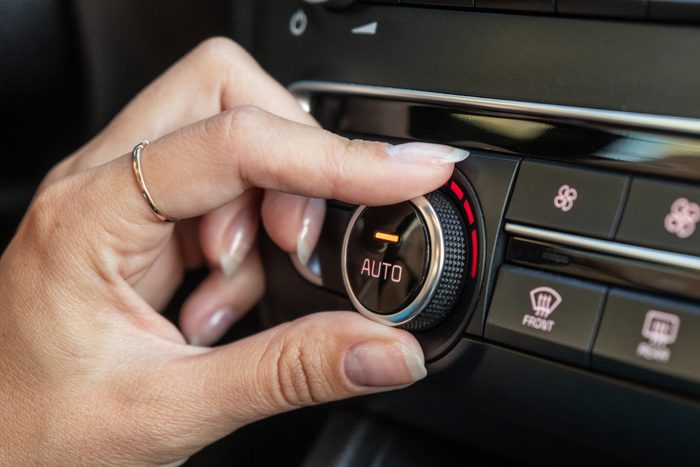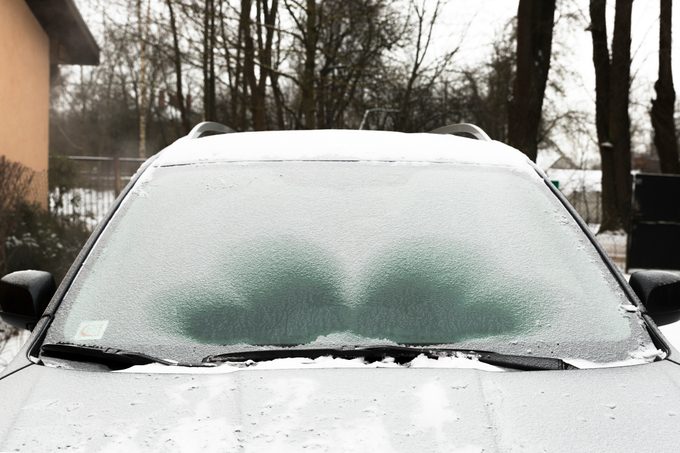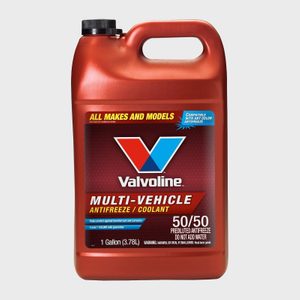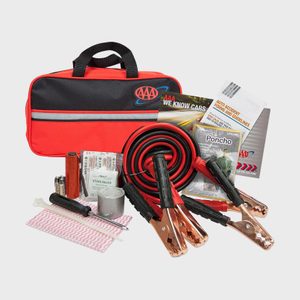Here’s Why You Shouldn’t Warm Up Your Car in the Winter
Updated: Sep. 01, 2023

Is this age-old winter trick doing more harm than good? If you're wondering how long you should let your car warm up before driving, the answer may surprise you.
The air is freezing, the car is freezing and you’re chilled to the bone. But if you ask any professional how long should you let your car warm up before driving it, you might not get the answer you’d expect. Especially with remote-start capabilities, it can be tempting to get your vehicle nice and toasty as you remove snow from your car on a frigid morning. But heating your car before you hit the road is actually one of those dreaded winter driving mistakes.
You’ve gotten your car ready for winter, and on the surface, it makes total sense to hop into a cozy front seat and a warmed-up vehicle ready to roll. But we talked to an automotive expert to find out how long should you let your car warm up (and whether it’s illegal to idle your car as it warms). Her answers might surprise you!
How long should you let your car warm up?
On a freezing-cold day, let your car idle and warm up for 30 seconds at most before you start driving, says Margarette Stine, automotive expert at 4 Wheel Online. This will ensure that the oil gets circulated properly and the engine becomes well lubricated.
The practice of idling for 10 minutes before you begin driving is antiquated, she says. It’s not one of the ways to get better gas mileage, plus it can be potentially harmful to your engine, as well as the environment.
Of course, hopping into an ice-cold car isn’t a pleasant experience, but driving your car will heat the engine faster than letting it idle. So let it run for 30 seconds while you scrape the frost from your car windows (or use this simple defrosting trick) and hit the road.
Why does driving your car warm it up quicker?
Whether you’re heading to work, running errands or leaving for a winter road trip, don’t waste time figuring out how long should you let your car warm up. Cars warm up quicker while being driven than idling. “Fuel is continually being burned [when you drive], creating energy used to power the wheels and run other components like the air conditioning,” says Stine. “This energy is also used to heat the engine, which heats up all its components.”
While driving, more components of your car (like brakes and steering) are being used, creating additional heat to warm your car faster. Compare that with idling in park or neutral, where fuel isn’t being burned at a consistent rate and less heat is being generated.
Why should you stop warming up your car?

Warming up a car has been a common practice for many years. But today, whether you’re driving in frigid weather, sleet or driving in light snow versus a snowstorm, it can be more harmful to your vehicle than helpful to warm it up while idling. Benefits of not warming your car before driving include lower fuel costs, reduced emissions and no forethought necessary. Plus, it takes longer.
When you stop warming up your car ahead of time, you will save money on gas because the engine isn’t idling, and you will reduce emissions with less time spent with the engine producing exhaust.
So, why do people warm up their cars?
Once upon a time, cars with carburetor engines ruled the roads. Those carburetors would mix gas and air to vaporize the fuel so the engine ran smoothly. Back then, says Stine, cars were built with significantly less efficient engines, and they did need to be warmed up before use so they wouldn’t overheat or break down. This practice eventually became a habit for many car owners whose cars frequently stalled out on cold winter days, and since then, it’s been passed down from generation to generation.
While you should always know what to do if your car breaks down in the winter, you can rest easy knowing that automotive technology has improved. Today’s vehicles are now equipped with fuel-injection systems that don’t require manual priming or warming up.
Despite the many advancements, many drivers are still asking how long should you warm up your car when it’s freezing outside. The answer is to simply begin driving.
Prepare for winter weather
Want to avoid frozen doors and windows, engine freeze-up and accidents? Test your car battery, check your tires, lubricate your window tracks, latches, hinges and door locks, and wash your car in the winter. Stine also suggests getting an oil change regularly, so the engine of your car continues to run smoothly throughout the chilly season. And while there are things you should never leave in your car during the winter, there are plenty of must-have products to keep on hand that will ensure your vehicle is safe and comfortable, including a car emergency kit, antifreeze, de-icing washer fluid, a collapsible shovel, snow chains for your tires, an ice scraper, a heated car blanket and winter windshield wipers.
Source:
Margarette Stine, automotive expert at 4 Wheel Online



